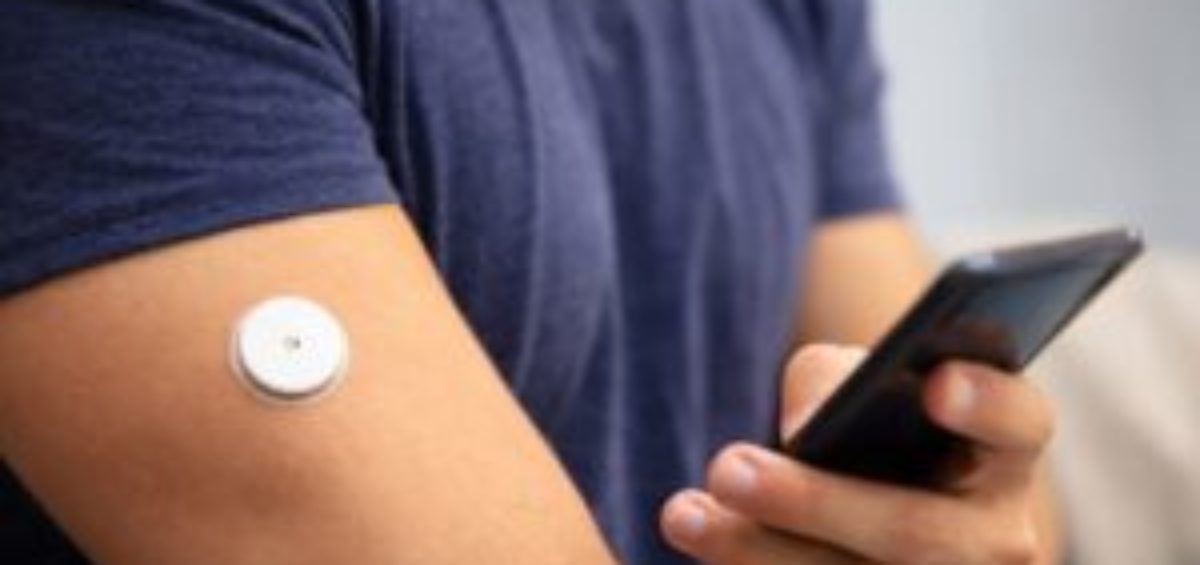
What is a CGM?
A continuous glucose monitoring system, or CGM, is a compact medical device that continuously monitors an individuals’ blood glucose, also called blood sugar, all day and night. A small sensor held in place by an adhesive patch is inserted into the abdomen or arm with a tiny needle almost painlessly penetrating the top layer of the skin. The sensor sends glucose readings wirelessly to a monitor device such as a smartphone app which displays blood glucose data. The data gives a continuous, dynamic reading of the blood sugar every five minutes and alerts if the blood sugar is too high or too low.
Unlike the standard finger prick test (FPT) for blood glucose readings, CGMs give constant feedback and are far more convenient. CGMs measure glucose in the interstitial fluid surrounding cells compared to the FPT which measures capillary blood plasma glucose levels. The two measurements are not exactly the same but correlate highly.
Be in control of your blood sugar roller coaster
Knowing your blood glucose levels at any point in time helps you make more informed decisions regarding diet and physical activity and can help you stay in your healthy glucose range.
Blood sugar fluctuations are like a roller coaster ride. The better you can control that ride –from wild and high to smooth and low – the better it is for your health. Each person has a personal and unique blood sugar response to carbohydrates and sugars and a CGM can support individuals to become more conscious of their energy intake and help make changes to their lifestyle. Two individuals can eat identical meals, but their blood sugar levels will react differently. Keeping your blood glucose steady and avoiding the highs and lows is one very important solution to optimal health.
‘Watch this space’ – CGM tech is coming to your wrist
Balanced blood sugar has many benefits for our health even for those with supposedly normal glucose tolerance. CGMs can be used to observe other symptoms in relation to blood sugar. For instance, your energy or tiredness, hunger or fullness, satiety or cravings alongside your glycemic response. Or for measuring the effects on your glycemic response with early or late evening meals or with stress and exercise.
CGMs have revolutionized diabetic care but currently they are mostly only available through a prescription, they need to be renewed roughly every 2 weeks and are costly. The ‘breaking news’ however is that tech innovations will make continuous glucose monitoring available in wearable and non-invasive ways. The smartwatches of the very near future (1-2 years from now) will be adding CGM features. This will enable mainstream consumers to monitor and gain insights in the blood glucose response to certain foods. These insights will empower consumers to have better control over their health and will help them make better lifestyle choices.

